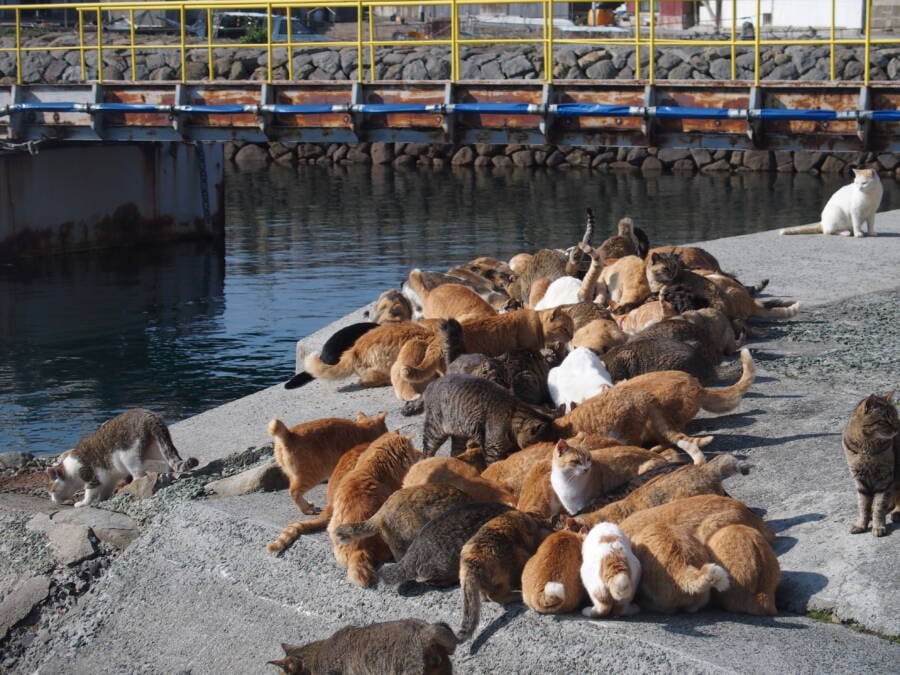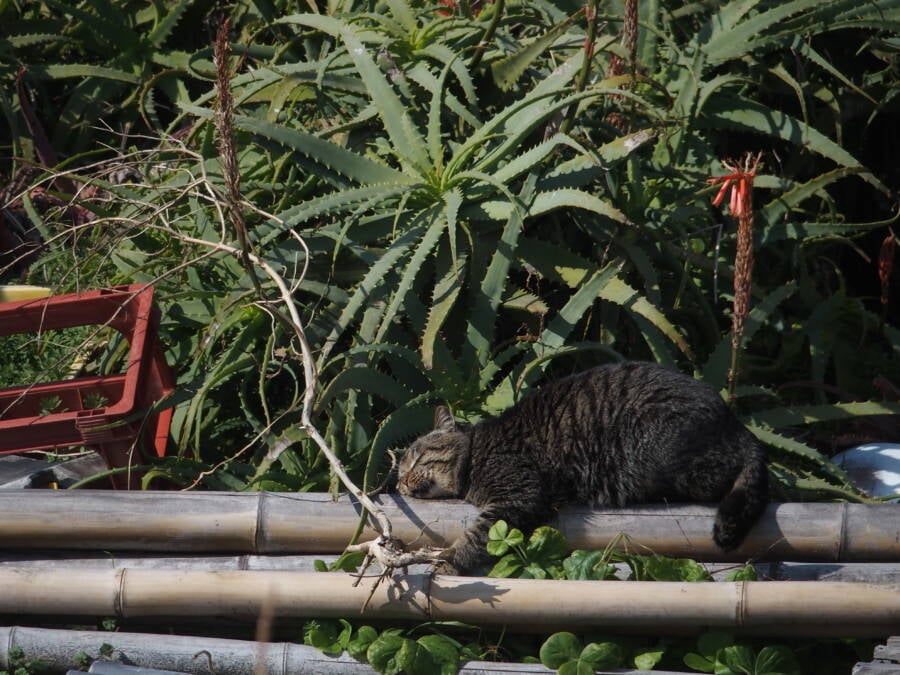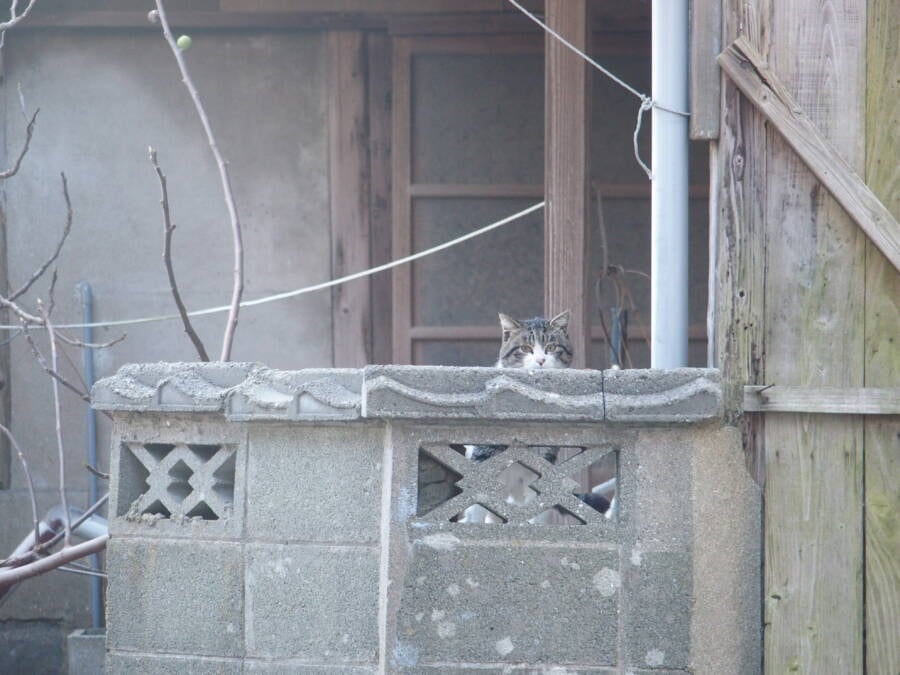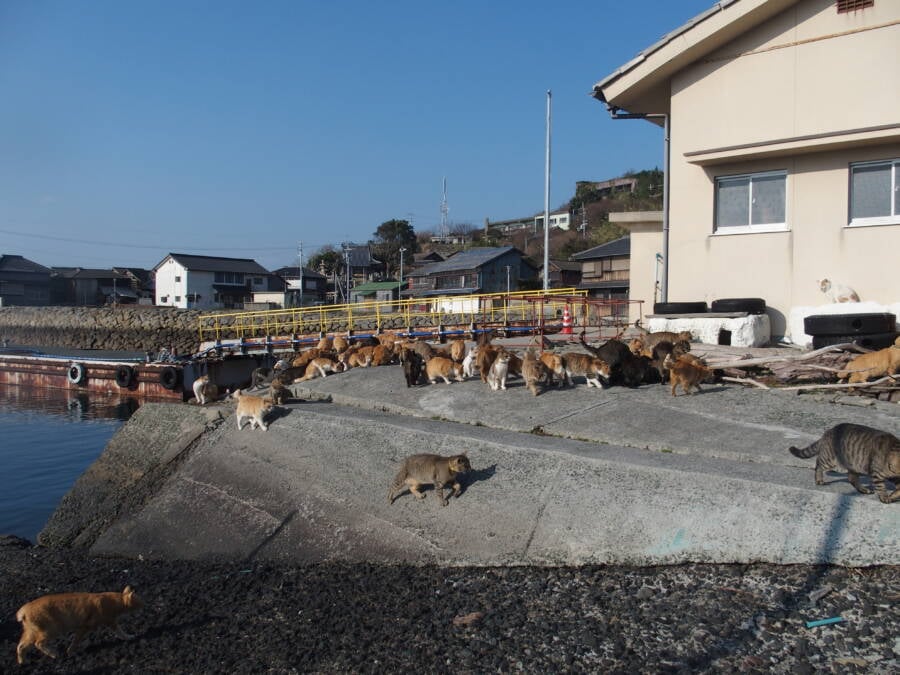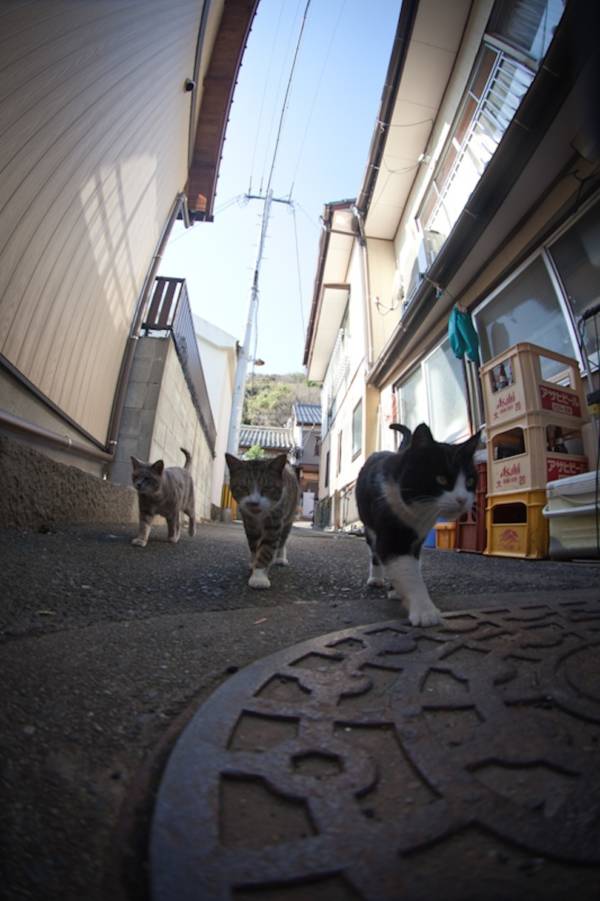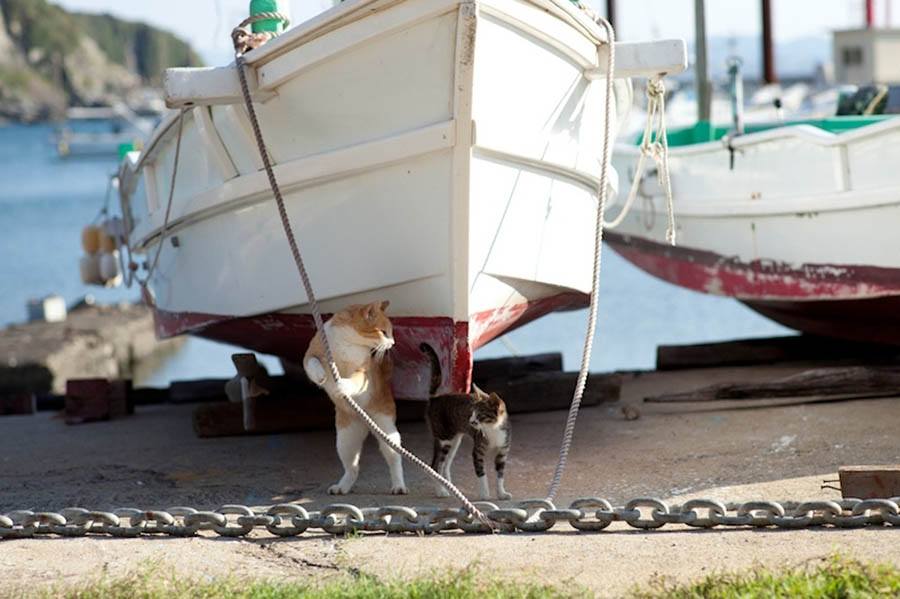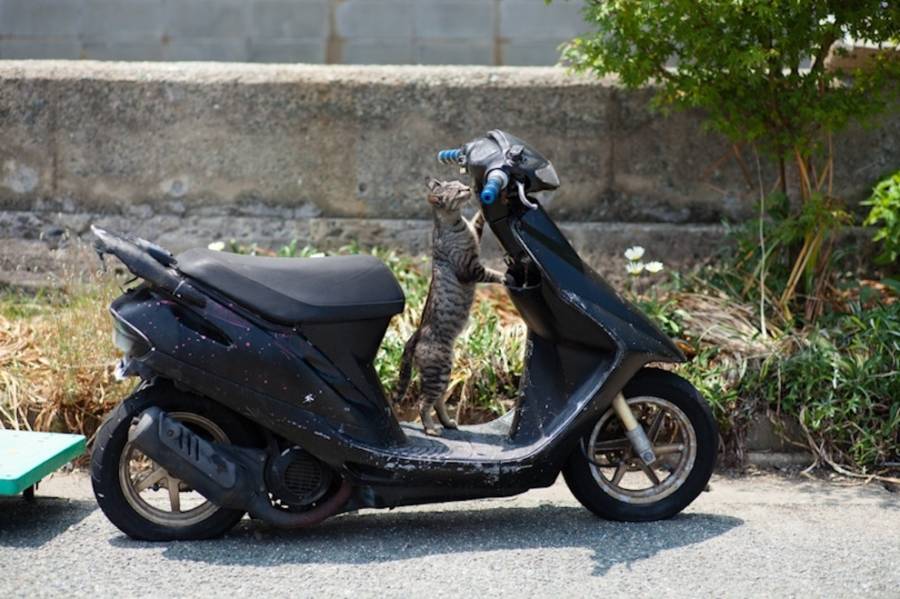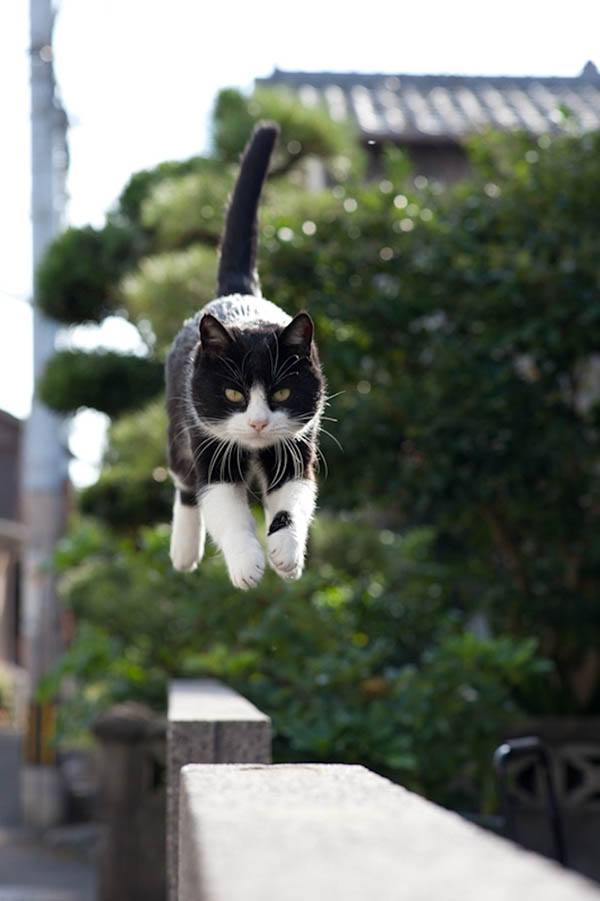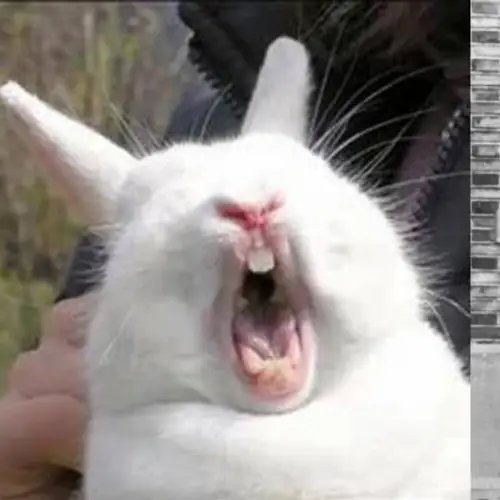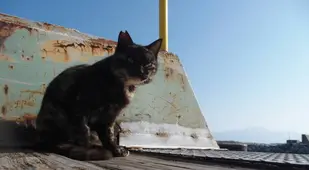Once a thriving fishing village in southwest Japan, Aoshima is now home to only six humans but hundreds of cats, earning it the moniker of "Cat Island."
A ferry from Ozu, Japan, will take you to Aoshima Island in less than 20 minutes. The sparsely populated island has become a booming tourist attraction, but there are no stores or restaurants here.
What Aoshima does have are cats — lots and lots of cats.
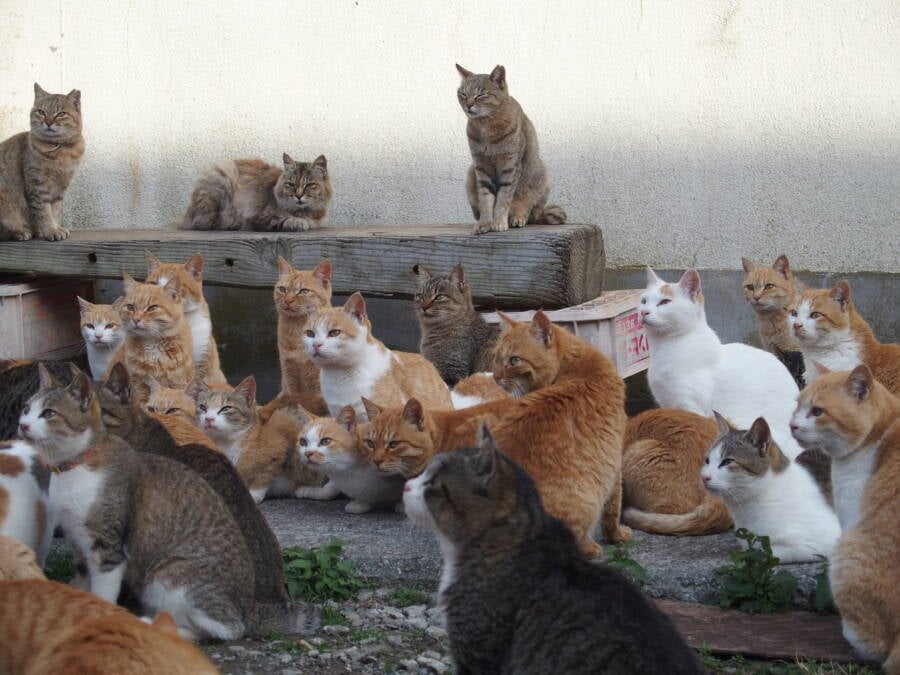
FlickrThe cats outnumber the human population on this so-called cat island nearly 36 to one.
“I seldom carried tourists before,” ferry captain Nobuyuki Ninomiya remarked. “Now I carry tourists every week, even though the only thing we have to offer is cats.”
Known as “cat island” and “cat heaven,” Aoshima has eight cats for every one human as of 2018.
The cats are used to humans and therefore are considered semi-feral. They will happily play with visitors and there is even a designated feeding area near the community center.
But how did this remote island become overrun with felines in the first place?
Life On The Cat Island Of Japan
Believe it or not, Aoshima isn't unique; in fact, Japan has a total of 10 other islands filled with felines.
Fishermen originally brought strays over to these islands in order to lower rodent populations and with no known predators, the cats have reproduced unhindered.
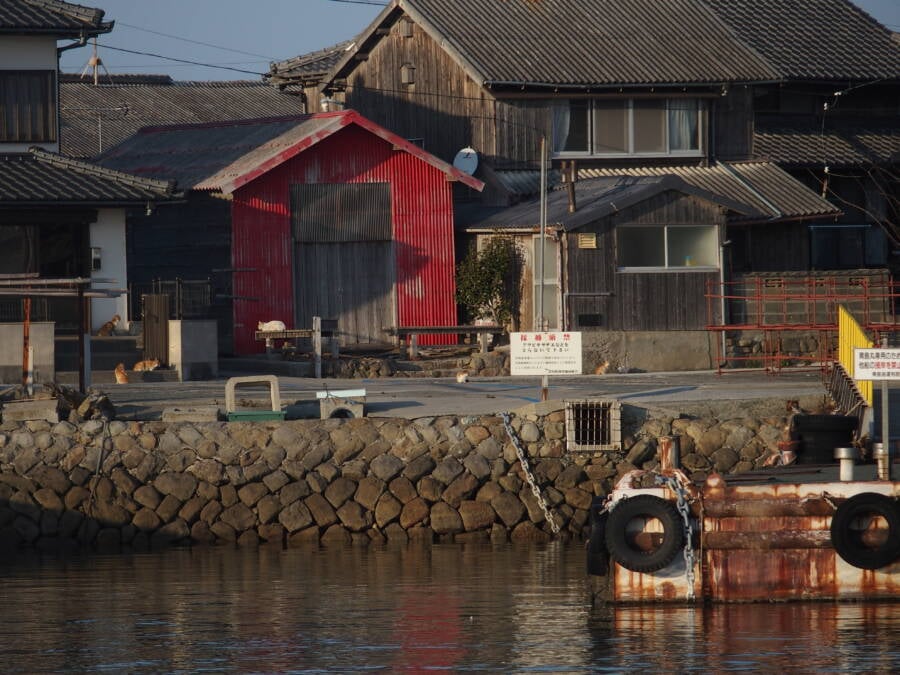
Sayoko Shimoyama/FlickrAoshima, a.k.a. cat island, off the coast of Japan.
Of course, locals also tend to overfeed the cats, especially the islands' elderly population, which tends to do so in an attempt to develop companionship with the creatures. Although, no cat lover can blame them for that.
Japan is also not the only place where cat islands abound. Until recently, the United States had at least 18 cat islands and Australia at one time had 15.
Then again, Japan does regard cats a little differently. It's worth noting that the same paper that reported the amount of cat islands for the U.S. and Australia was also concerned with eradicating the cat populations on those islands.
For some, culling the cat populations on Aoshima might seem like a good idea because, as it turns out, large groups of cats can create a stressful environment.
Researchers studying Aoshima have learned that cats arrange themselves in hierarchies, where males compete for territory and their female mates compete for food. With so much competition, cat researchers argue that living conditions on this so-called haven are anything but heavenly. With so much interspecies competition, kittens often die before adulthood from starvation, disease, and a type of infanticide previously seen exclusively in lions.
However, others insist that life on the island is a virtual picnic. "It's a cat paradise here," said Kazuyuki Ono. "They love nothing more than to just lie about in the street sunning themselves all day."
The only snag is that when winter comes and tourism slows down, the cats become more desperate for food.
"In spring and summer, tourists bring food to feed the cats but when it gets cold, the sea is rough and nobody comes. Sometimes boats can't cross in the rough seas," Ono added.
This happened in 2016, but luckily, a plea for food resulted in a plethora of donations.
What Happened To The Human Residents Of Aoshima
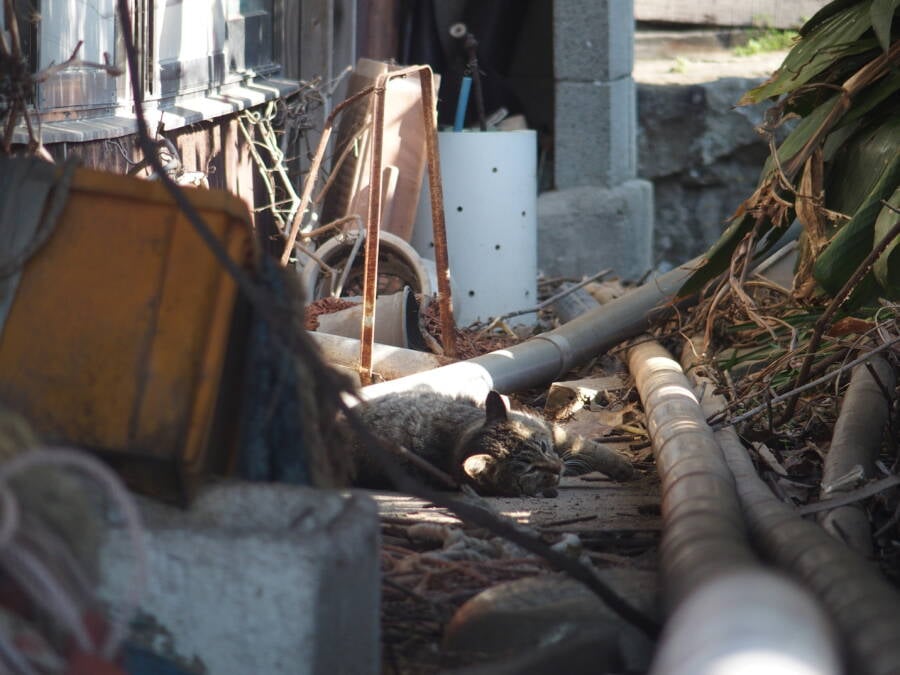
Sayoko Shimoyama/FlickrA resident cat finds rest in a secret hideout.
Aoshima Island was once a prosperous fishing village; home to 900 people in the mid-1940s. Today, only a handful of elderly residents who didn't relocate after World War II remain. In fact, as of 2019, only six full-time residents were recorded.
A photographer known as Fubirai has spent several years documenting the island's cats on his blog. In 2012, the photos went viral with the help of Buzzfeed and led to a small tourism boom. But other than that, unfortunately, Aoshima is not exactly a bustling hub for tourism. There are no hotels, restaurants, shops, or even a vending machine.
There is, according to one account in Reuters, however, a "cat witch."
"There was this sort of cat witch who came out to feed the cats which was quite fun," said 27-year-old Makiko Yamasaki. "I'd want to come again."
If you're planning a visit to Aoshima, bring all your own supplies and take all your garbage home with you. Be respectful of the elderly residents and kind to the felines who call Japan's cat island home.
"If people coming to the island find the cats healing, then I think it's a good thing," said 65-year-old fisherman Hidenori Kamimoto. "I just hope that it's done in a way that doesn't become a burden on the people who live here."
After this look at Aoshima, Japan's cat island, learn about this island that was taken over by pigs and aptly named pig beach. Then, discover what Australia is doing to combat its enormous rabbit problem.
